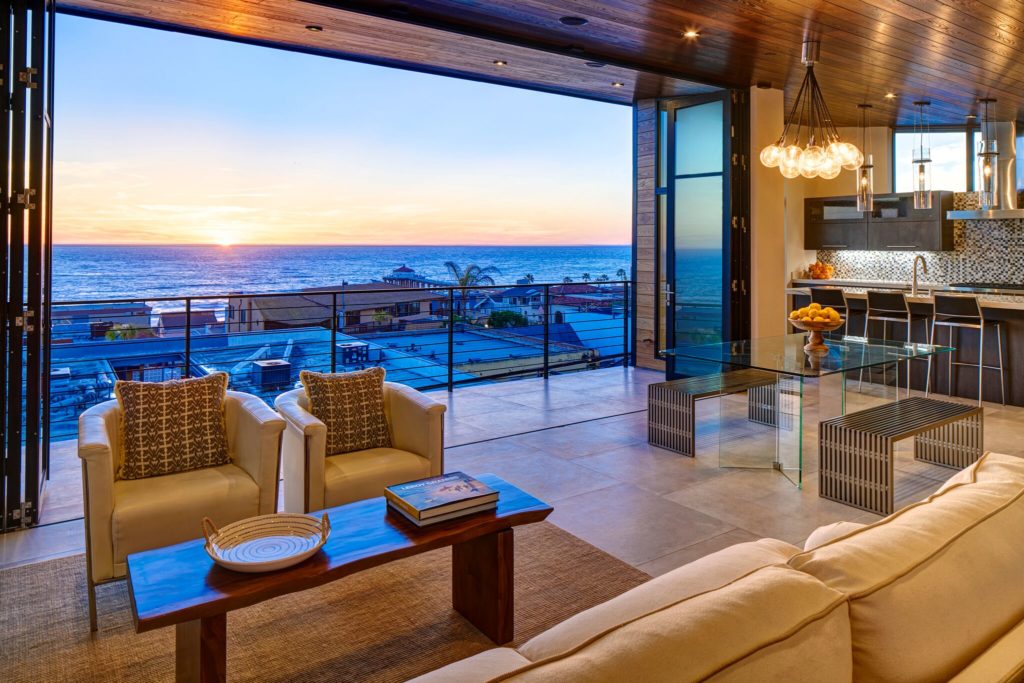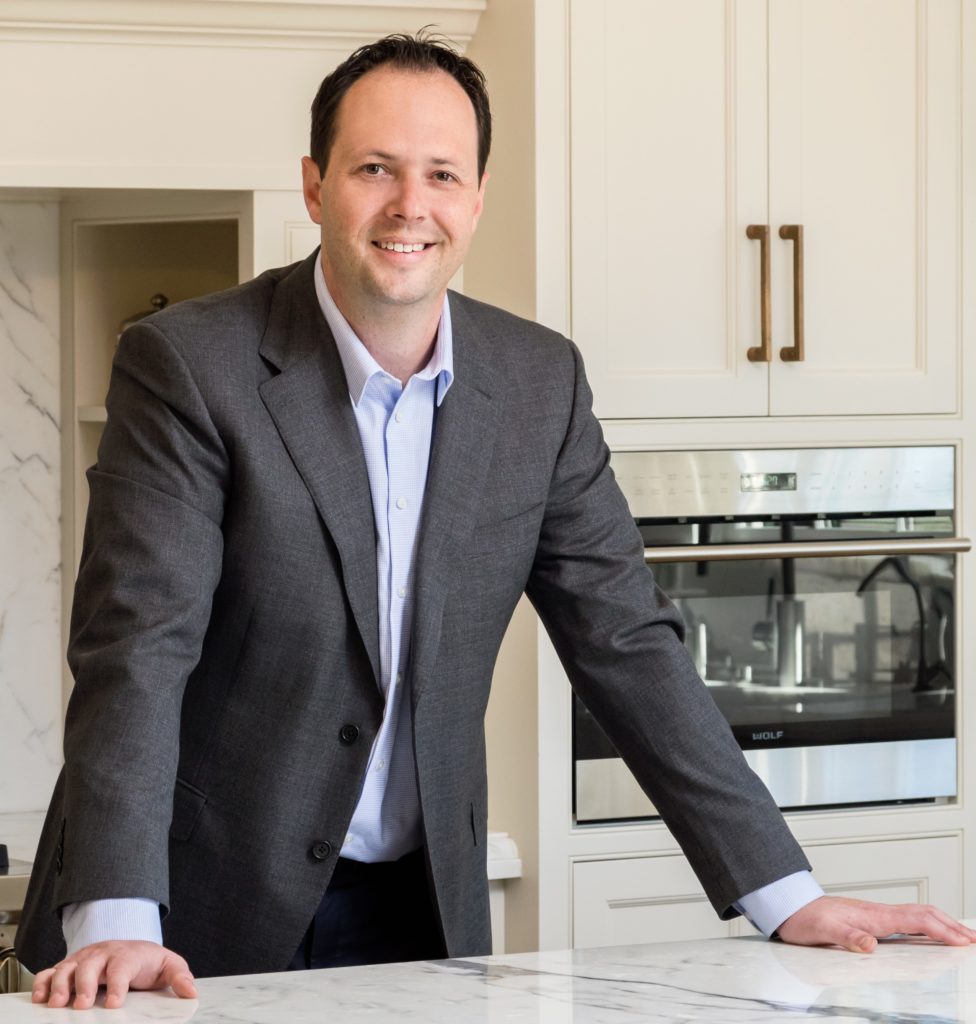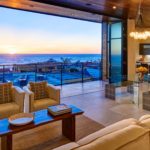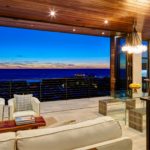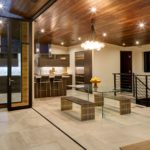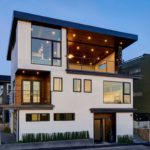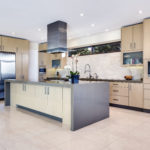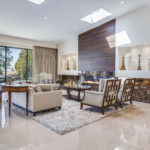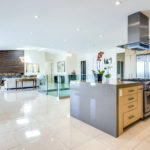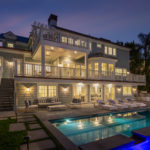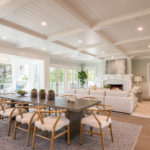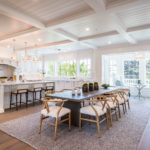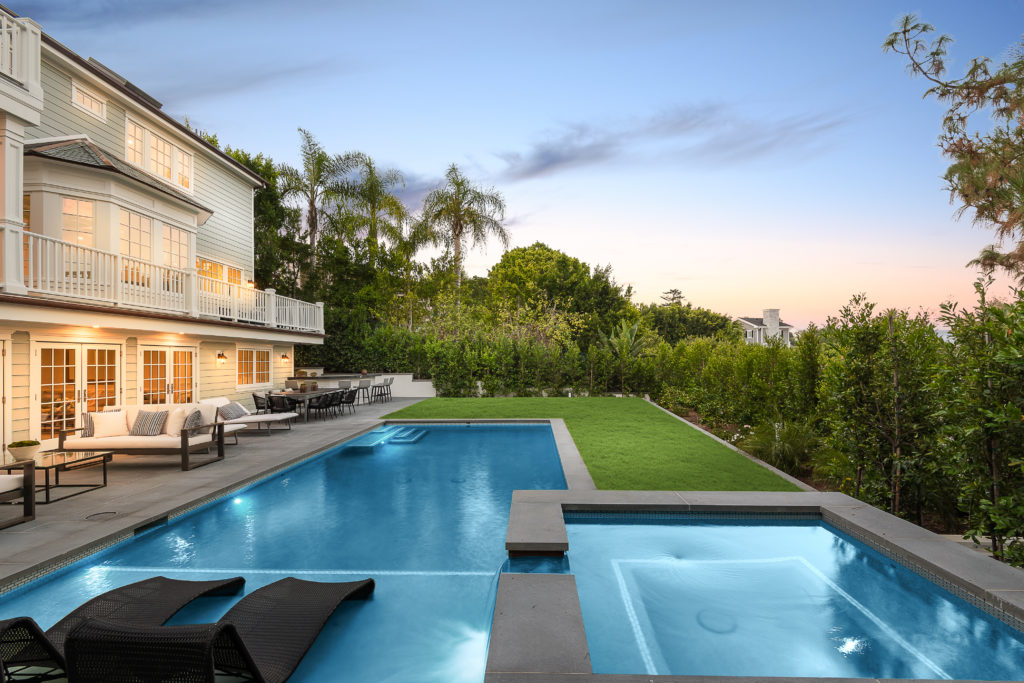Architect Crush: Joe Spierer
Author:Michelle KonstantinovskyWhen he opened his eponymous architectural firm in Southern California a decade ago, Joe Spierer couldn’t have anticipated the exponential growth that would take place in the coming years. Today, Joseph Spierer Architects, Inc. is a go-to firm for clients seeking coastal residences from urban modern to contemporary to Cape Cod traditional. Spierer approaches each project thoughtfully and creatively, bringing out the best in both ground-up construction and adaptive re-use, allowing clients to enjoy the process along the way. Learn more in our Q+A below.
How did you get your start in architecture?
I was exposed to art, architecture and design at a young age. I grew up in Palos Verdes, CA, where my father is a real estate attorney, so I was always seeing amazing homes throughout Southern California.
I knew that I had aptitudes for art, science, math, and three-dimensional thinking, but it was not until college that I met an architect for the first time. I had not even considered architecture as a career until then and it wound up changing the course of my life. Once I discovered that world, I loved it and never looked back.
It was the early works of Santiago Calatrava that sparked my initial design inspiration. He uses organic shapes and integrates structure in his buildings which create a beauty unlike any other.
After college, I interned for several notable firms in Los Angeles before opening my own in the South Bay. Even before I knew my career path, I always wanted to start a business. So as soon as I received my architecture license, I went out on my own.
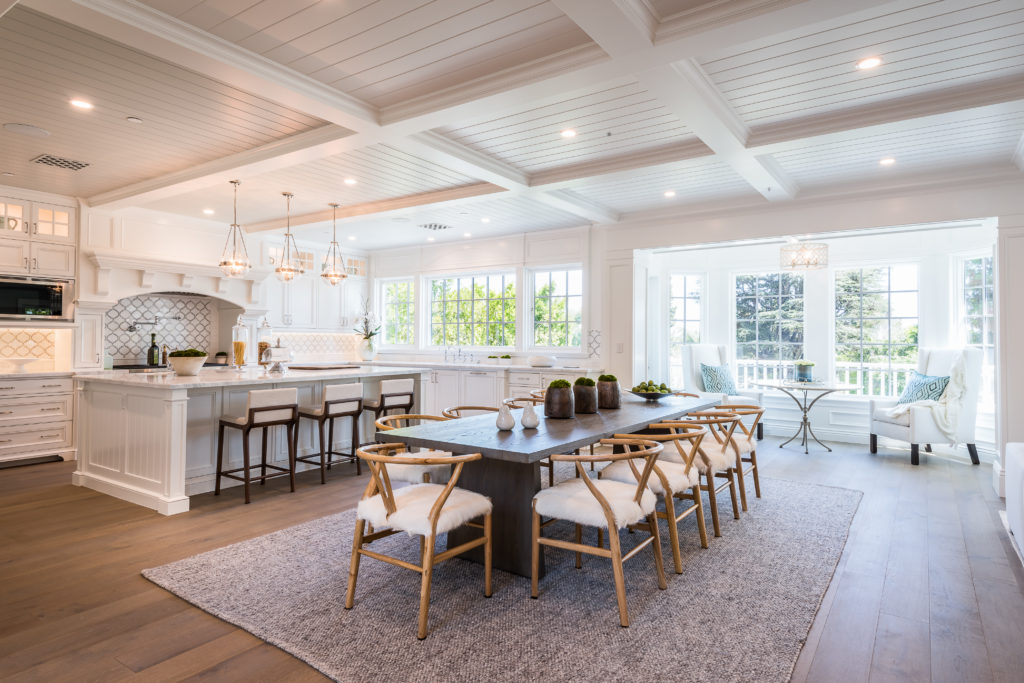
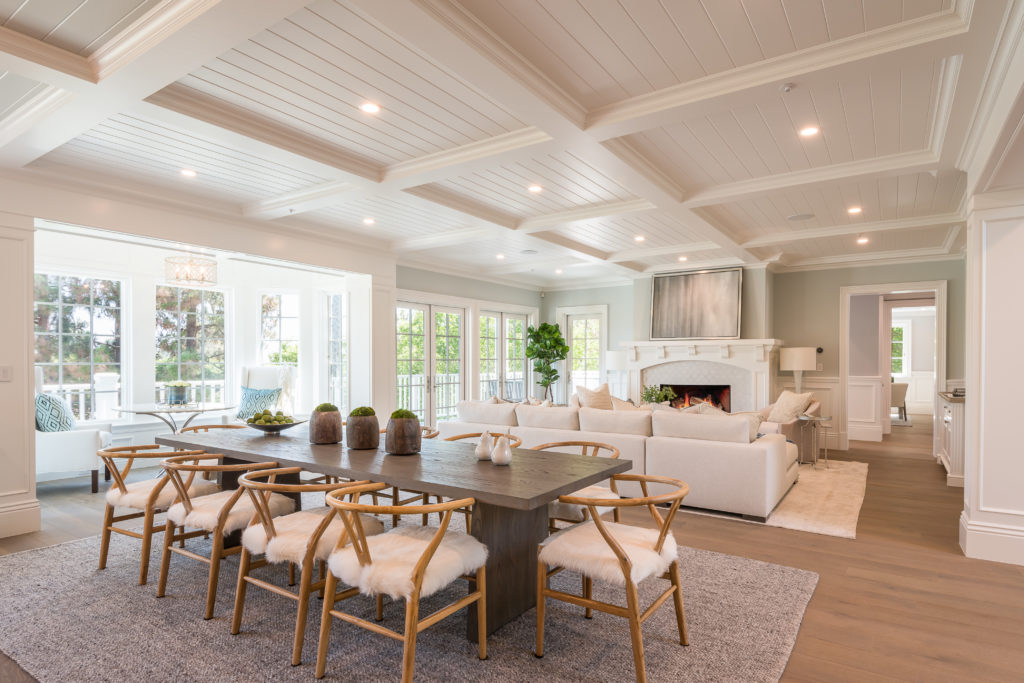
What are some of the challenges you face when building/designing to take full advantage of a location’s views and what are some ways you’ve overcome them?
On the west coast, we have some of the most amazing views and many of our projects involve taking advantage of those views. As we work so extensively in the South Bay, we approach each house from a new and different perspective. Often the site can inform what it will look like. An extreme slope might lend itself to architecture that is more nestled into the site, and we are able to take full advantage of the sandy soil and utilize simpler foundations.
One of our client’s homes in Rolling Hills overlooks the most amazing view. The original home was completely closed off from the view, and I knew immediately that this was an underutilized property. After 500 cubic yards of earth movement and three 30-foot folding wall systems, we had a spectacular home. The pool sits right outside the living room overlooking the horizon. When sitting on the couch looking out the window, it appears as if the pool blends in with the ocean beyond.
In Manhattan Beach, we took a 1,350-square-foot lot and turned it into a 2,000- square-foot contemporary space with breathtaking views. We maximized the space on the first floor, fitting in the garage, entry, guest bed and bathroom. In order to preserve the ocean views as much as possible for the second level master suite, guest bedroom and bathroom, the staircase was situated on the east side of the house. The staircase itself is a design element of the space as its composition changes from heavy to light as you approach the third floor. On the top floor, the massing of the ceiling helps open the entire living area up to a breathtaking ocean view surrounded by glass so that the main living space is light and airy, revealing all the elements of nature. Additionally, two tri-fold doors open to the balcony harmoniously blending the interior and exterior spaces.
In Palos Verdes, one of our clients wanted to build a new 6,500-square-foot house on a 22,651-square-foot lot with an existing 6,500-square-foot home on it. Convincing the city to allow a new house with that much square footage would have been highly unlikely. So instead of doing a complete tear-down and ground-up construction, we went down to the studs of the exterior walls and called it a remodel. In the end, practically everything was redesigned, including the floor plans and the style of the exterior. This way, we were able to give our client the new house they were looking for and the redesigned floor plan allowed the main spaces to take full advantage of the views.
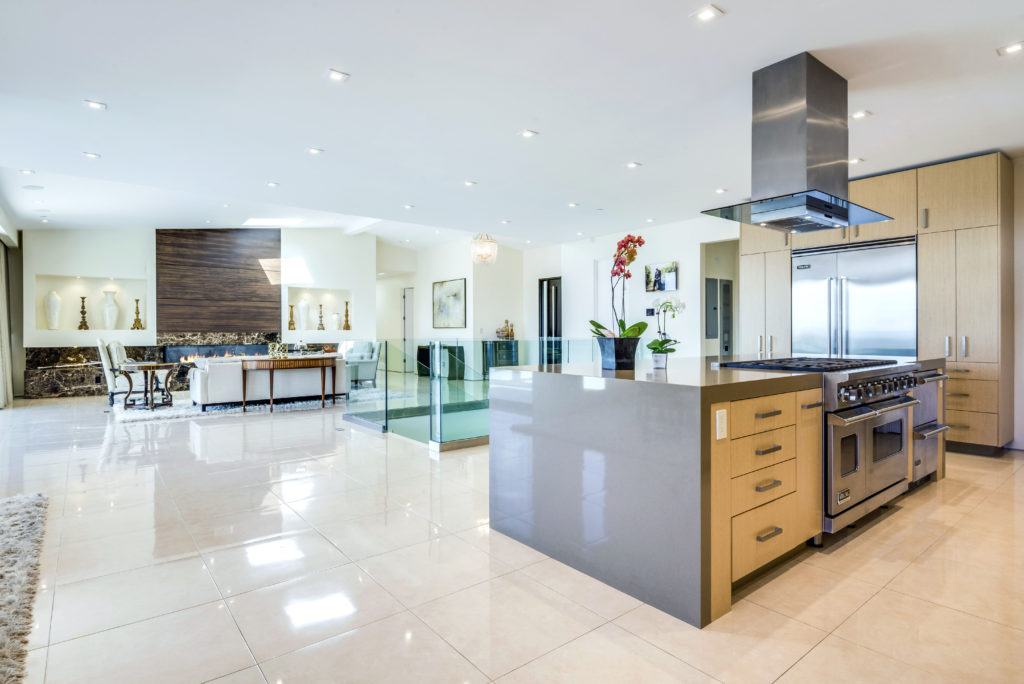
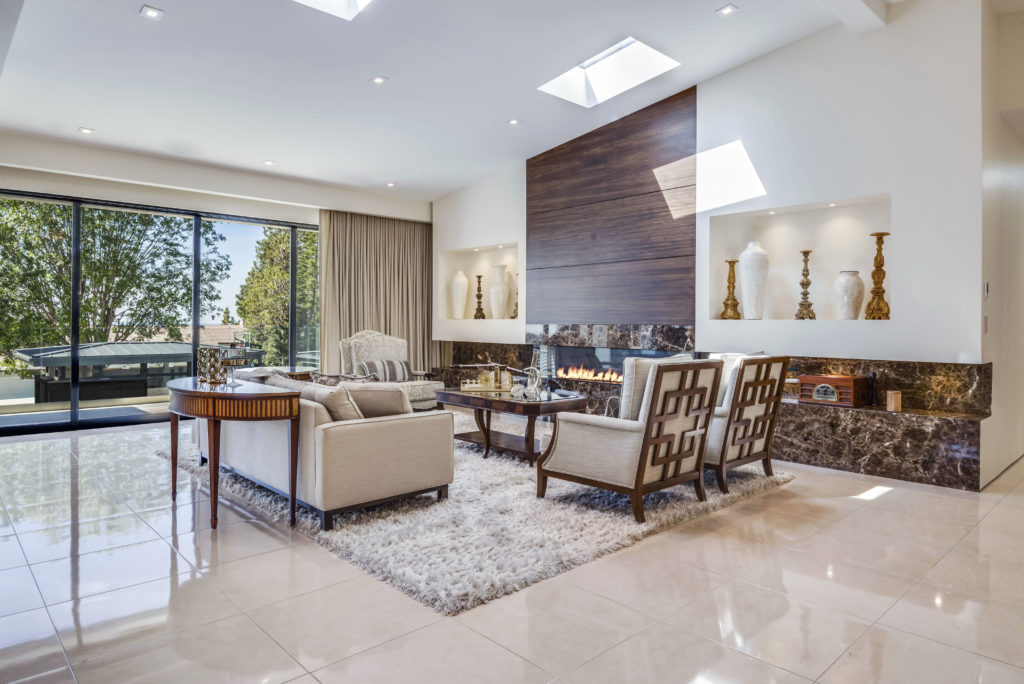
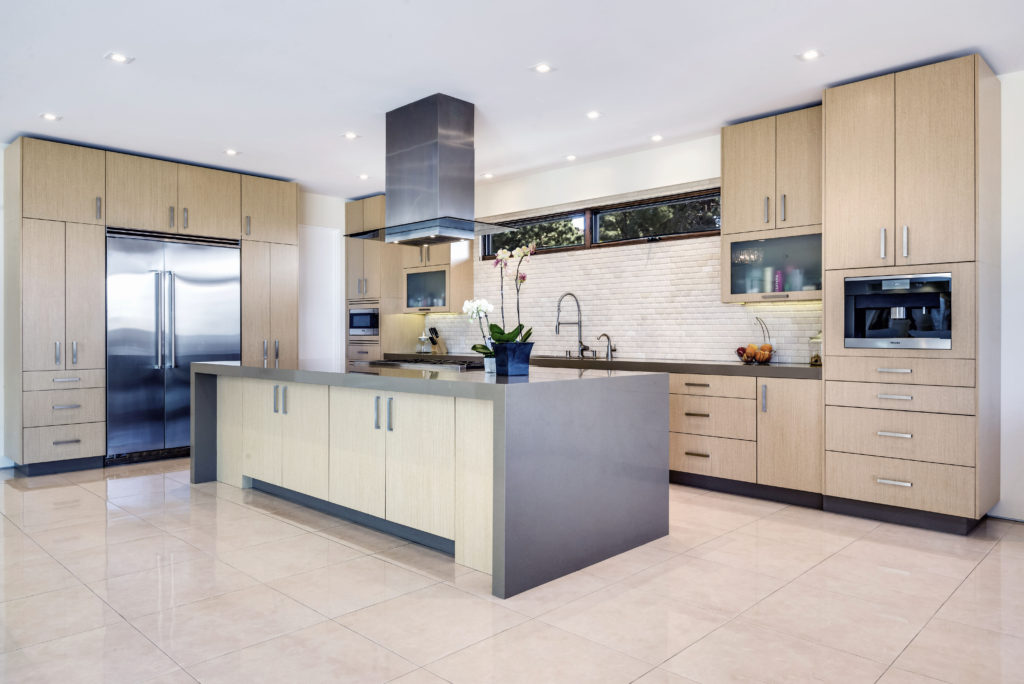
How do you differentiate “contemporary” and “modern” architecture?
Contrary to what many people think – in terms of architecture, “contemporary” and “modern” are not synonyms. One of the things that makes them distinctive is that modern is really a distinct style, while contemporary is not – it’s a way of thinking, based on the trends of the day and by definition is constantly evolving. It’s quite broad and there are so many ways to accomplish it.
The use of clean lines and strict conformity to form and function of modern architecture in the first half of the 20th century, gave birth to the more free-flowing form of contemporary architecture in the second half. Interior and exterior spaces are often designed to incorporate the environment that they are in and make the design an extension of nature.
That’s why the contemporary style has such architectural variety – it becomes whatever the architect imagines, with no constraints.
What’s your process for getting to know a client?
We begin each project by discovering and defining the personal style and desires of each client – what are the important factors that drive a person or couple to design their own home.
The first step of the process is to conduct an extensive interview with our clients. We take into consideration such things as personal habits and routines and even how family members interact with each other. We ask them hundreds of questions, all of which are important in informing the subsequent design, such as “what is your morning routine?” and “what is the first thing you do when you get home from work?” This can all have an effect on many important aspects such as how natural light and ventilation are handled, how spaces are laid out, and even down to small details like light switch placement.
We also review hundreds and hundreds of images and create idea boards for inspiration. Clients provide photos of their family, a mountainside, a flowerpot, an art piece, their favorite building – whatever inspires them and makes them feel good. During the course of a few more meetings, we narrow down who they are from a visual standpoint.
Using this method, we are able to design projects that meet our clients’ personal tastes, satisfies all aspects of every need, and therefore become more meaningful and beautiful to them.
Describe a particularly memorable project.
One that immediately comes to mind is a project we did on the bluffs of Palos Verdes Estates. Across the street from the property is a dedicated city park, so that precludes the chance of any houses being built. This provided a great opportunity for the house to have 180-degree views. We took advantage of that by using glass walls and massive sliding glass doors on the first and second floors.
The issue was privacy from park visitors – we had to make sure there was no “fish bowl” effect. Ultimately, we had to balance the owners’ privacy with their views. To accomplish this, we created view corridors on each floor, offset the floor and added new non-obstructive view barriers. But we also had to overcome major objections from a couple neighbors and from the PVE Planning Commission.
Creating something that the community was in line with that was spectacular for the client led to meeting after meeting and diagram after diagram. The final design pleased everyone. We utilized silhouettes, neighbor outreach and patience to reach the final design. This all took about six months. The whole architectural process took about 1-1/4 years before we could begin building.
One of the reasons this client selected my firm is our reputation for successfully working with area planning commissions. We understand how they work and the client knew that we could save them a lot of time and money in their quest to fulfill their design dreams with any potentially difficult situations.
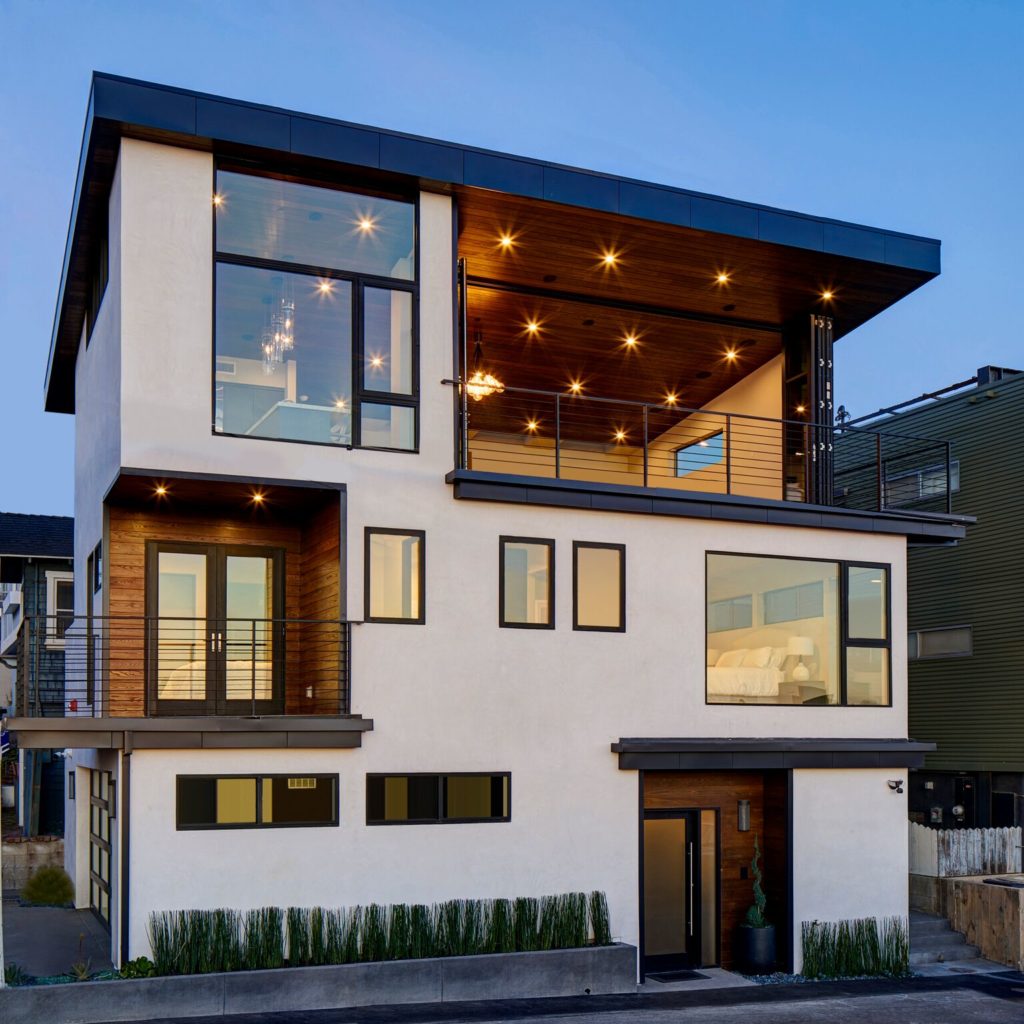
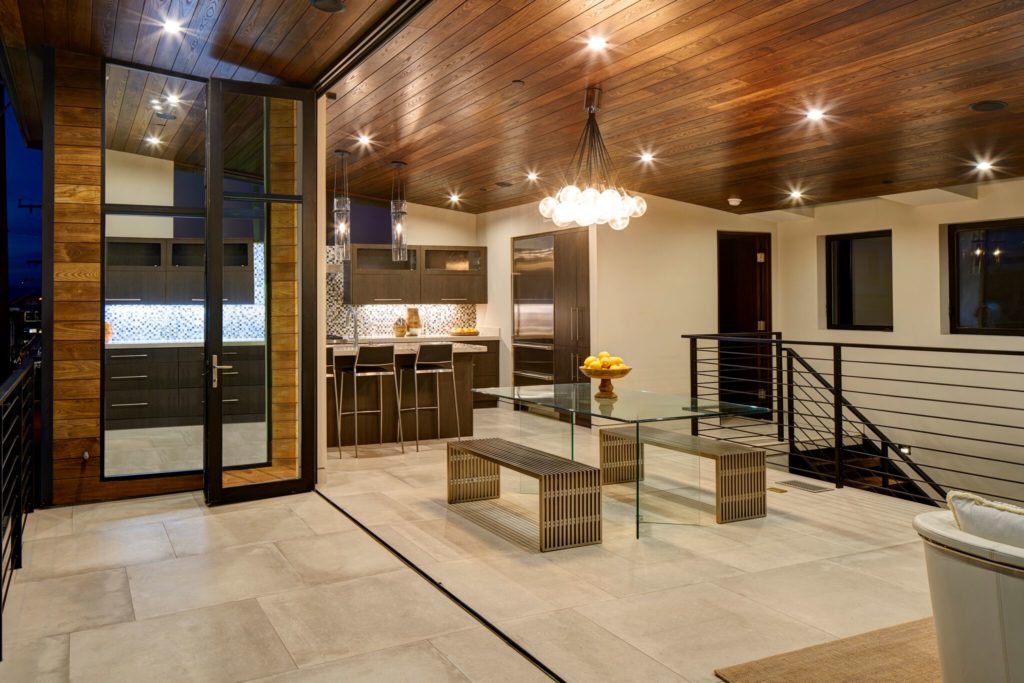
What’s your dream vacation destination and why?
As a kid, I went to England and Europe and fell in love with architecture and history and learning about why buildings look the way they do. I have been back many times since, but I would love to go back to Italy again because it has such amazing architecture – going from city to city, seeing historical architecture and how it works with society today. It would be a fun thing to do with my children. My five-year-old son is already into architecture.
Lightning round!
First concert? Berlin.
Favorite TV show? Breaking Bad.
Favorite ice cream flavor?Peanut butter and chocolate.
Go-to karaoke song? Foo Fighters – “Everlong.”
